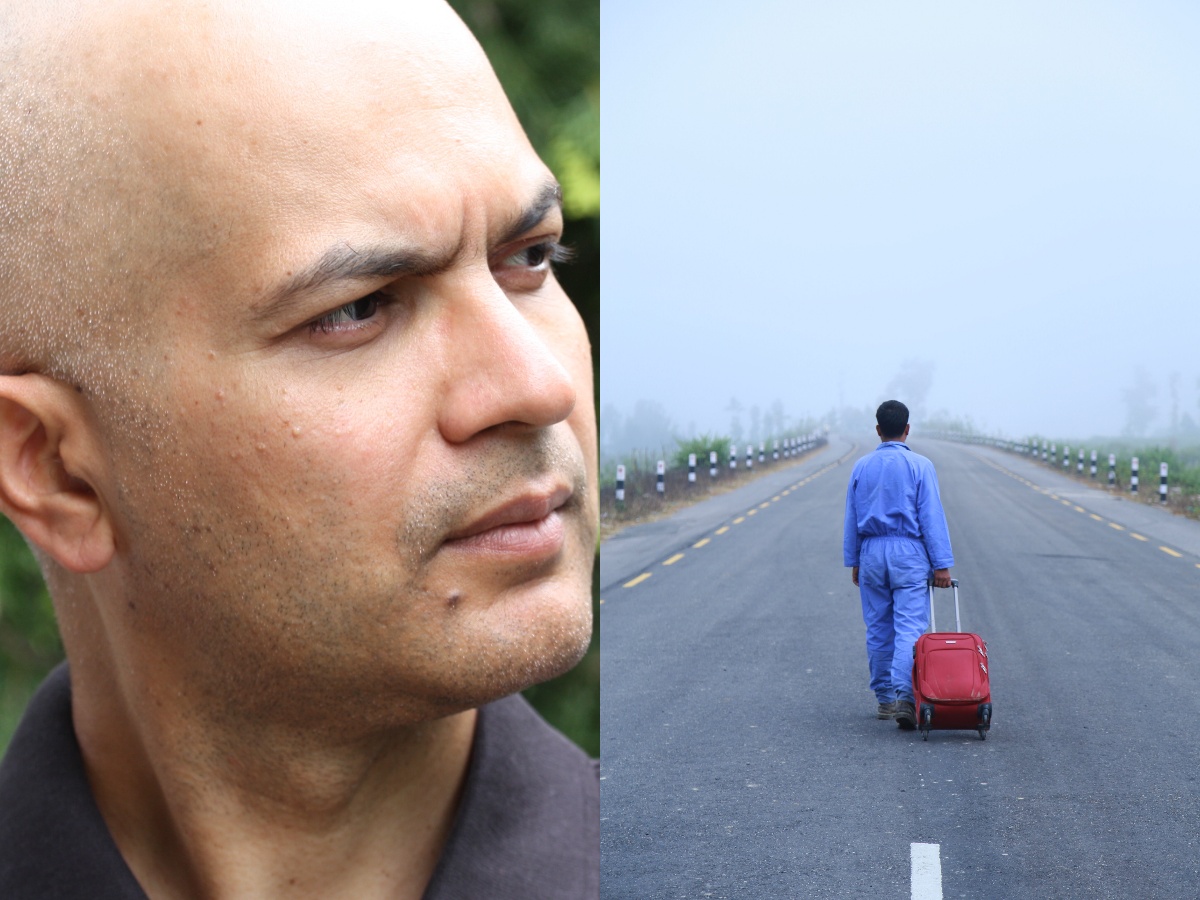
One fine morning, when I saw a couple walking backwards, I thought that they were out of their minds. You might also have the same opinion if you see people doing that. But in the course of my morning walks, I kept seeing people walking backwards, albeit every so often. So I decided to do some digging.
And what I learned through research about backwards-walking proved an eye-opener. Also known today with names like retro-walking, reverse walking, backward walking, retro pedalling, retro locomotion, or walking the wrong way (on a more hilarious note), it has in the recent years taken a real upward trend as an exercise regimen globally.
Natural phenomenon
If you care to jog your memory a little, you will realize that backward motion is not something new; we have been doing it the entire time one time or the other in our daily living. In track and field and other sports, athletes do it all the time.
To quote some instances, a soccer full-back is seen running backwards very often, so does a rugby player or referees to those games. Players engaged in games such as tennis, badminton or for that matter squash shuffle back with frequent backward lunges and golfers reverse-walk as they target a putt.
Curiously, even the iconic pop star Michael Jackson (1958-2009) step-danced backward, which came to be known as “moonwalking.” Maybe, he did not at the time realize that it made a world of sense.
History
As it is, retro walking is not at all a recent discovery. Going by history, it is believed that it has its root in ancient China. The saying, “a hundred steps backwards are worth a thousand steps forward,” belongs to Chinese wisdom. The ancient Chinese people practised walking backwards to maintain good health and as a cure for certain maladies.
Ever since, this practice in China came to be passed over generations, from father to son, mother to daughter and teacher to disciple. Little surprise, every morning, people walking backwards in their neighbouring parks all over China, is a common scene; some even clap their hands while doing it.

Some believe it has long since been associated with the Chinese philosophy and religious belief that this exercise helps to restore the balance of ‘Qui,’ (translating to ‘life energy’ or ‘life force’). For the Chinese people, it is considered a good form of exercise with proven benefits of physical and mental health. It is also referred to as having a close relation with Tai Chi Chuan or Qigong.
The popularity of retro walking gradually spread out worldwide. From walking backwards people came up with a newer idea of retro running. And soon from a simple concept, the practice took on a bolder perspective as races for both retro walking and running were staged.
Today, retro walking has reached newer heights among health enthusiasts and has successfully turned into a hot fitness fad.
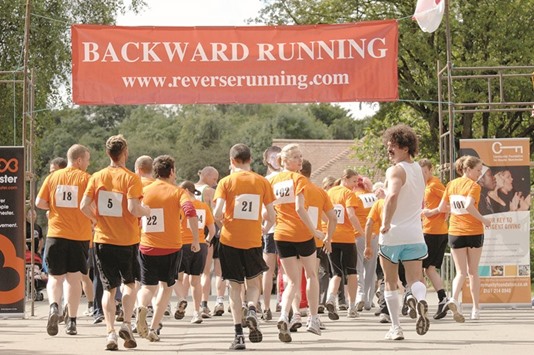
That is not all. Bizarre as it may sound, to acquire fame and fortune some even retro walked to set world records. One such American gentleman was Plennie Lawrence Wingo (Jan1895-1993), a Guinness record holder, who at the age of 36 reverse walked from Santa Monica, California to Istanbul, Turkey (about 13,000km) in 1932.
It seems facts sometimes appear stranger than fiction. In 1989, Mani Manithan, a man from India walked backwards for 25 years. As it turned out, he forgot to walk forwards!
In 2017, a giant Panda in a Berlin Zoo only walked backwards despite all efforts made by the zookeepers to coax him to walk forward. She resumed her forward-walk after the zookeepers introduced a male partner into her cage.
With time, retro walking took off all over the world. In the late 1900s, it was found as a potent therapy for sports injury too. It seemed there was no looking back for this practice of reverse walking both as an exercise regimen, injury therapy, and fun sports.
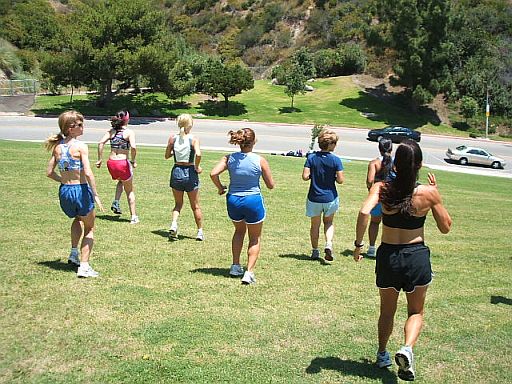
What’s so special about it?
The million dollar question now is: what’s so special about retro walking? The answers to that are supported by many positive aspects. The story at a glance reflects as such:
- Fitness gurus and trainers argue that since retro walking presents itself as a completely new regimen, it enables a person to use muscles that are rarely used while doing other regular exercises including walking forward.
- It involves less strain and lesser motion for knee joints as it involves the ball of the foot rather than the heel like in forward-walking. So, heel strike is lessened as the toes take the impact. As such retro walking strengthens the knee and the patella joints.
- Experts claim that it burns 30-50 per cent more calories than forward-walking. Let’s do a little more digging into the benefits of retro walking.
Strengthens leg muscles
Retro walking induces a good workout of the leg muscles such as the quadriceps (or quads) and the calves to a greater extent than regular walking.
It also aids to strengthen and boost the flexibility of the hamstring muscles, which enable activities such as walking, running and jumping.
Next, it works the ‘glutes’ or the gluteus muscles located in the buttocks, which are regarded as the strongest muscles in the human body responsible for the hip and thigh flexibility. In short, retro walking enhances the musculoskeletal system.
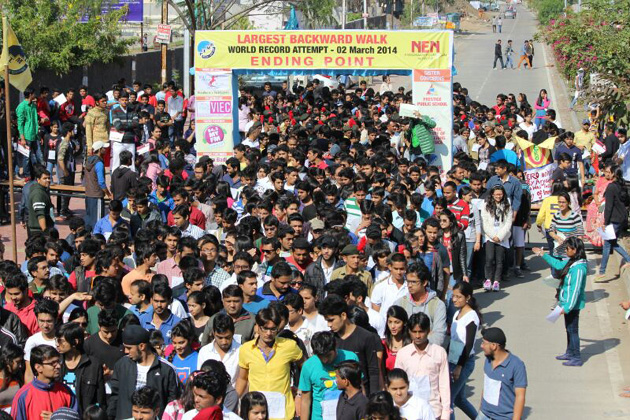
Improves cardiovascular function
Walking backwards, the fitness experts advocate, are more strenuous than the regular forward walking and requires an extra reserve of energy but with healthier results. It activates the cardiovascular system more efficiently than the conventional walking forward.
The experts further elaborated that the heart BPM of a person doing retro walking escalates by a whopping 50 per cent in contrast to the conventional forward walking. So, a retro walker tends to burn more calories and achieve a better cardiorespiratory fitness in a much shorter time.
Alleviates knee-joint pain
With the coming of middle age, degeneration of our cartilage and the underlying bone is a biological phenomenon. As a result, people suffer pain and stiffness of the joints such as the hip, thumb joints and especially the knee.
Some even may develop osteoarthritis (more frequently women than men), or contract rheumatoid arthritis (begins between ages 30-60). In 1990, the global figure of people with broken hips due to osteoporosis was estimated at 1.7 million.
Medical practitioners and experts have from time to time carried out random clinical investigations and study designs involving osteoarthritis patients to ascertain the effectiveness of retro walking. Time and again such experiments have concluded in favour of retro walking for its therapeutic benefits, which is said to have worked better than the kinematic chain exercises including conventional walking.
The results substantiated in as little as four weeks that retro walking alleviated knee pain, improved functional mobility of the knees, for even chronic osteoarthritis patients, and strengthened hip muscles.
Alleviates back pain
Back pain can be a frustrating experience. Everyone experiences it one time or the other. Researchers and fitness experts have been advocating backwards walking either on a treadmill or outdoors to relieve lower back pain.
Studies carried out by health workers have shown that retro walking helped ease back pain for:
- It adds more flexibility to the pelvis alignment and reduces pressure on our spinal discs for the backward steps eliminate heel-pounding to the ground as the toes contact the ground first.
Apart from strengthening the hamstring and the core muscles, it elevates knee flex and hip extension, which help to ease back pain and restore the flat back syndrome.
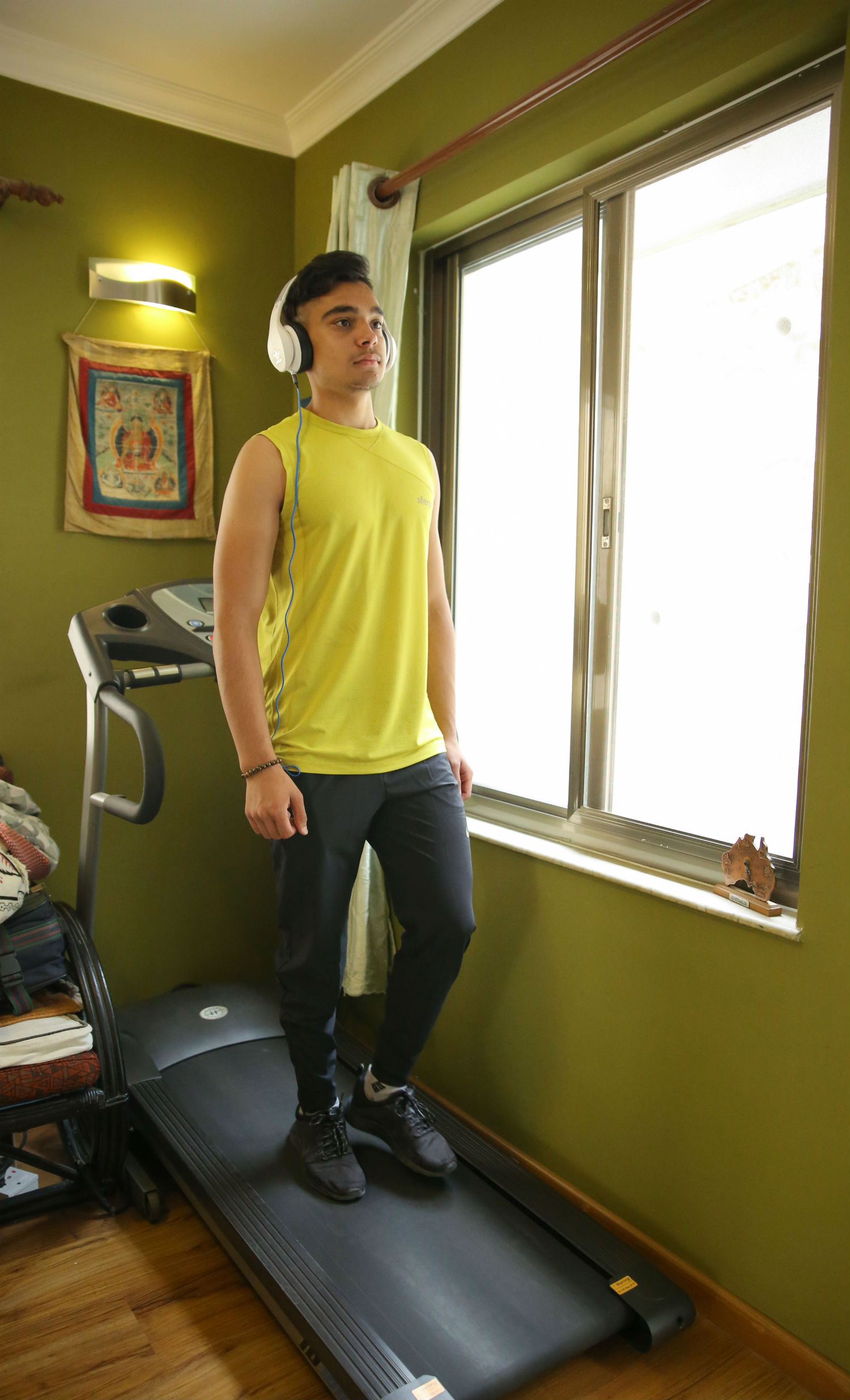
Improves gait and balance
Falling, by far, is considered the scourge of old age. Old people are at greater risk of falls resulting in injuries and trauma. It has become a leading cause of morbidity both in the developed and developing countries. In the US alone, it is estimated that one-third of Americans in their mid-sixties and above are vulnerable to falls resulting in injuries, hospitalization and even death.
Retro walking improves stability as your mind stays conscious all the time and it helps the lower body coordination. It boosts your cognitive control, mindfulness and mental sharpness. You are watchful and alert right from the moment you start walking back to the finish, which is more often than not the case with forward-walking.
To put it more scientifically, it enhances our proprioceptive sensations responsible for body balance, gait, and stimulates the function of the cerebellum. In short, they are the human body’s sensory receptors, in the muscles, tendons, joints and even in the inner ear, which enable the detection of the motion of the body and the limb.
For this reason, experts recommend retro locomotion as an alternate exercise (also called mixed walking) to supplement conventional walking to minimize falls related to ageing.
Rehabilitation for injury
For athletes like sprinters and marathon runners injuries are unpredictable–an exasperating and unpleasant experience. Most such sportsmen suffer from problems related to the patella or the knee caps commonly known as “runners’ knees” syndrome.
Physiotherapists are also known to incorporate retro walking in their rehabilitation program for the treatment of sports-related injuries as it helps gain musculoskeletal benefits. Apart from that, backward locomotion as a part of the therapy program helps maintain balance, strength and aerobic conditioning.
Now that we have come to know the many benefits of retro walking, my research on it also shed light on how this exercise regimen may help the elderly against slipping into the most dreaded ailments like Alzheimer and Dementia closely related to old age.
Good news for old folks: research by medical scientists has revealed that retro walking as part of their regular exercise (including forward walking) can significantly help minimize the chances of retreating into those two disabling conditions.
Studies and research have concluded that incorporating this exercise aids people in their advanced years to burn more calories and improve their cognitive health. In simple language, it provides the seniors the daily dose of workout considered a ‘must’ and to retain their mental sharpness.
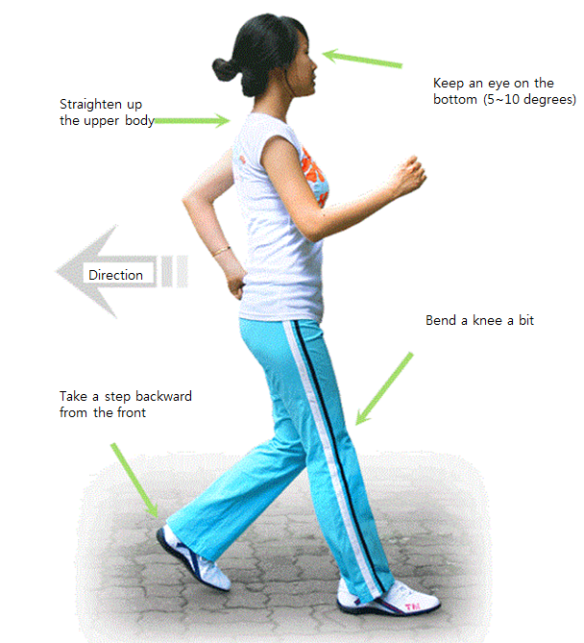
Caveat
A word of caution: Please be warned that this exercise requires extreme caution. It is nothing to be taken for granted when you introduce it as a cross-training to your regular exercise regimen. Walking backwards can be really tricky since you cannot see behind you. It is almost like walking blindfolded. So, easy does it. Think of safety first. Following measures may help:
- Select a safe location such as an open area, a soccer pitch, or a park with no tripping hazards to let you fall. Make double sure that you do not stumble or trip over any kind of obstacles; you can also consider doing it under a friend’s supervision.
- In the case of a vacant room or a hall, start by holding the wall with one hand and walk backward. Turn around and repeat the backward walking holding the wall with the other hand.
- Another safe way to retro walk is to engage a partner. Hold the hands of your partner and walk backward (see picture); does not matter if you can see nothing behind you because your partner serves as your “eyes.” Same goes for your partner too if you both plan to retro walk.
If you have access to a treadmill (or go to a gym instead), first try it on a slow speed (1.5km per km) holding on to the rails. With a little time, you can do it without holding the rails as you build up confidence. If you are used to working on an elliptical machine, you can try doing the backward motion too.
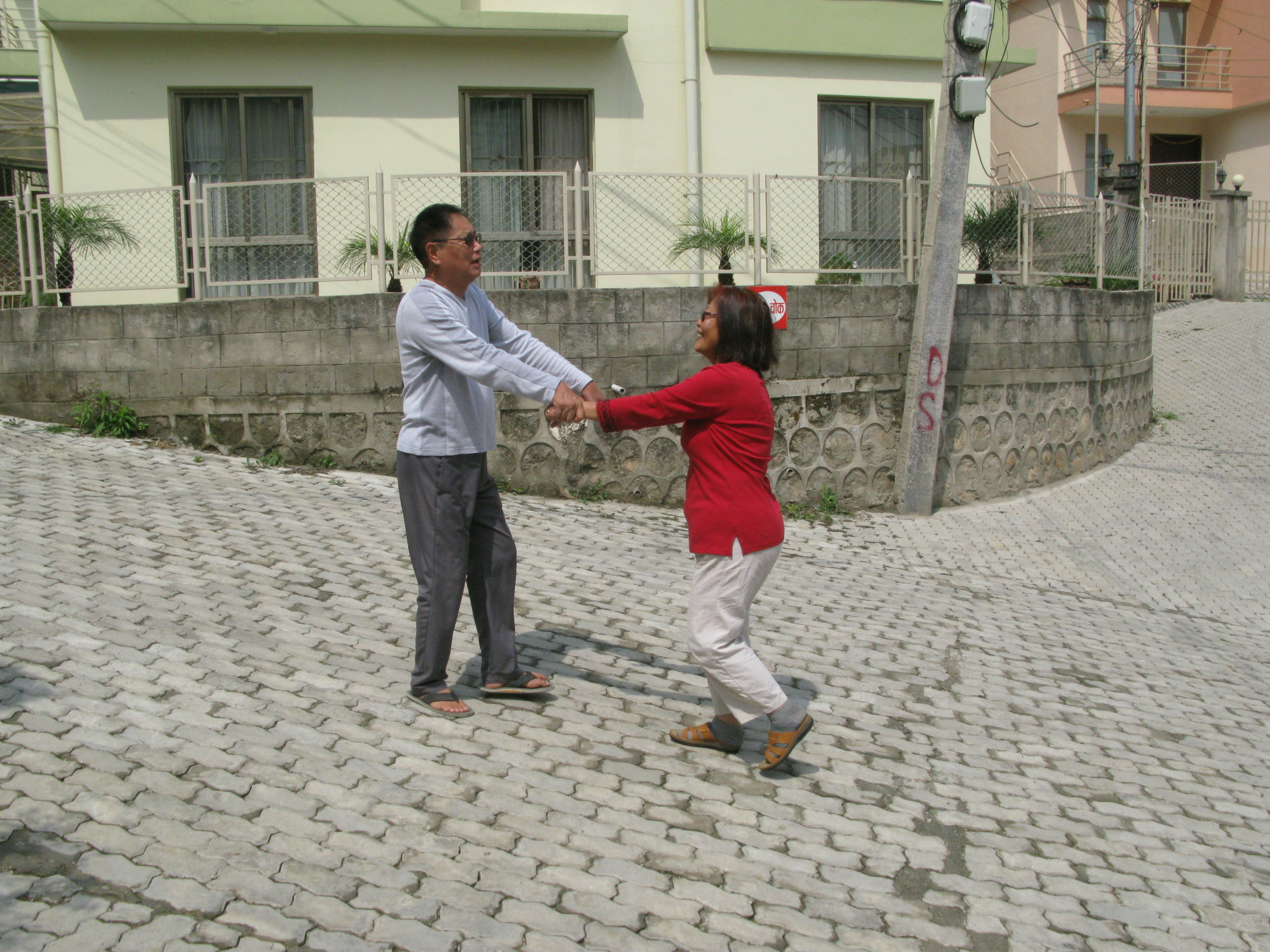
“As in a catapult, muscle-tendon units are stretched more slowly during the brake at the beginning of stance and shorten more rapidly during the push at the end of stance. We suggest that the catapult-like mechanism of backward running, although requiring greater energy expenditure and not providing a smoother ride may allow a safer stretch-shorten cycle of muscle-tendon units,” writes, Dr. Joseph Michael Mercola, an alternative medicine proponent and osteopathic physician.
As it is, it looks backwards walking can turn out as a healthy workout. Easier said than done, you might say. It may appear like a Herculean task at first. More than that, you might feel like a moron and draw queer looks from others.
Just turn a blind eye to that because you know that retro walking is going to bring you loads of benefits. Start slow; get the hang of it. All it takes is 15-20 minutes a day to benefit from it–so say the fitness experts. Be informed that miracles do not happen overnight. It takes time and patience.
If you’re already doing a regular fitness workout including walking, retro walking can immensely supplement it. Give it a try; it may help you reach the next level in your fitness regimen. Go forward by walking backwards! It pays!
The views expressed in the above text are solely research-based. Cross-reference, consultation with a certified expert and reader discretion are solicited.




